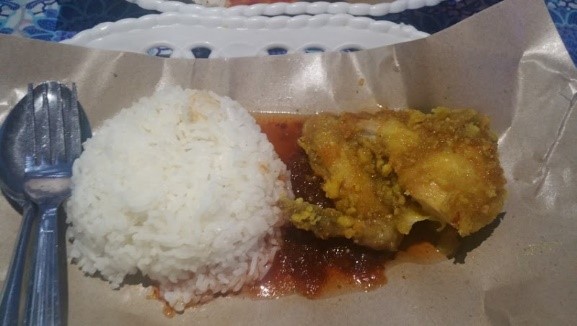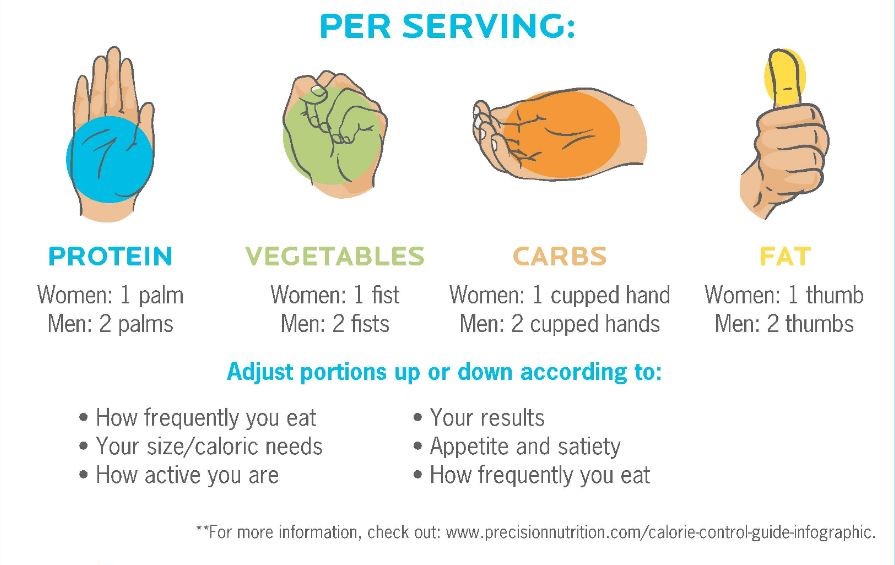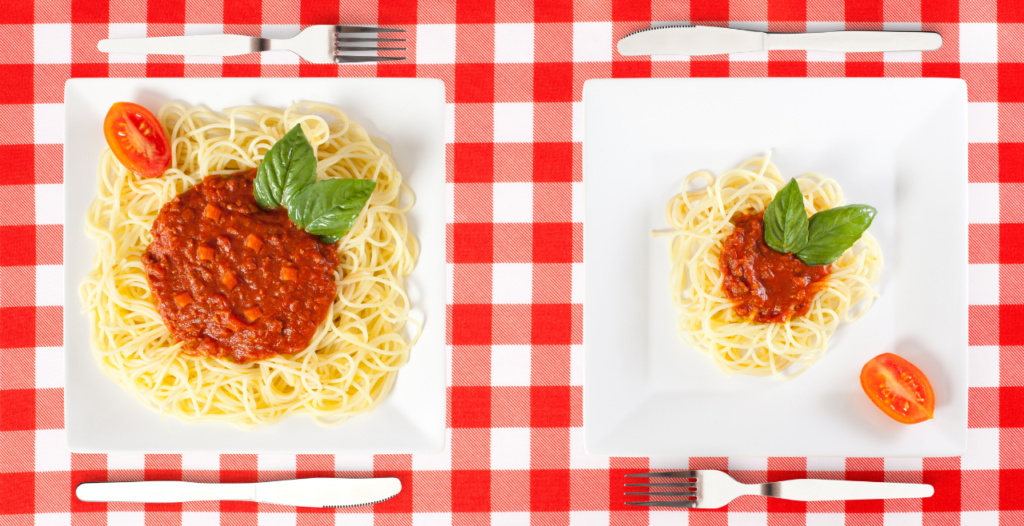Is reducing portion size all there is to it?
Let’s do a little mental exercise for a bit. Imagine you are just 1 hour away from your next meal, be it breakfast, lunch or dinner. Your stomach’s begin to growl as it urges for you to find some sustenance ASAP. Your mind start to wander through an imaginary menu in your head looking for a meal you’d usually have or perhaps something you’d wish to try out. Now hold that thought… I will now try to guess what you are currently imagining.
For starters, I would most likely be right if I go through the usual suspects of fried noodles, nasi lemak, laksa, maybe even some kolo mee. Then for drinks, maybe some iced lemon tea, bandung or Teh C Special? Finishing off with a side of cucur pisang or if you’re feeling extra, some traditional cakes too 😋. Oh, and when in doubt – there’s always a McDonalds, KFC or Jollibee just across the street.
I wouldn’t say I’m a mind reader – I’m simply listing out the most common goto meals of an average Bruneian. Like many health enthusiasts, I do have some beef with our typical Asian diet and I believe we can do better to optimize healthy eating in our fat loss journey.
Defining the typical Asian diet
Our local Bruneian cuisine mirrors that of Malaysian cuisine which consist of the examples I have mentioned earlier above. Most of our meals are accompanied with one bowl of rice or noodles and some type of meat with little vegetables and fruits while cooking it in a large quantity of oil. One of most symbolic Bruneian dishes, the Nasi Katok, highlights this point quite well. It is a dish with large amounts of rice, deep-fried chicken, and sambal – it’s selling point? A full fledged meal at a low low cost of $1.

Here’s what a Nasi Katok look like nationwide
These meals alone are not bad per se. They taste good, provide us energy, keep us full and is often cheap. However, when we are striving to lose weight or to live a healthier life, frequently eating these meals day in and day out may pose an issue that will hinder our goals of getting our dream body. Nasi Katok is not just a nutritionist’s nightmare, compounding this diet with these two other key factors can lead to further health concerns.
- Our sedentary lifestyle – Our diet should match our lifestyles. If we are working a sit-down job from 8-5 and is averse to exercise, our bodies don’t need as much energy as those that work in blue-collar jobs like at construction sites or oil rigs. Given that we are more inclined to being sedentary, the extra oil or rice is messing with our diet.
- Lack of vitamins and minerals – When we think of the typical Asian diet, we don’t commonly associate it with a salad or fruits platter – in fact, it’s pretty non-existent. These two food groups are the best sources of vitamins and minerals which are essential for many of our bodily functions that we take for granted like having good vision, blood clotting, helping our body fight against inflammation, improve our immunity and even some anti-cancer properties.
Reconstructing the way we eat
To keep things relatively simple, I’d say we focus on having the essentials down in every meal. Namely, some type of protein, vegetables and/or fruits, rice and some healthy fats. In terms of meal planning, here’s an excellent infographic from precisionnutrition.com that you to take home and consider.

An easy way to measure out food portions
Your proteins
When we start planning, our core meal should include some type of lean protein. This can be any low-fat such as skinless chicken, tofu, tempeh, etc. This is because protein helps maintain your muscle to a great degree which is important for your long-term health benefits. It also improves bone health and hunger cravings to boot! Hence, I suggest eating an equivalent of:
- about 100g of lean protein per meal, or;
- about 1 palm size of protein for women and 2 palm size of protein for men per meal
Your vegetables and fruits
Next up we have your greens. Vegetables are filled with fiber and micronutrients which not only keeps you feeling full throughout the day, but also give your body enough micronutrients to protect itself from diseases. The WHO suggests including fruits and vegetables as part of the daily diet may reduce the risk of some diseases such as cardiovascular disease and even some types of cancer. Hence, I suggest eating:
- up to 1-2 cup or 1-2 fistfuls of different fruits and vegetables with the higher range amount for males and the lower range amount for females.
Fruits and vegetables are sold cheaply in our local markets, and many are grown locally such as kangkong, biding, pakis, long beans, papaya, watermelon, mangosteen etc. They are pretty versatile when it comes to the different ways of cooking and serving. They can also be incorporated into many different dishes and make them even more palatable with their rich flavors.
Your carbohydrates
Carbohydrates play a huge role in providing our body with energy to carry out our daily tasks. In addition to that, carbohydrates may also help us to cope with stress to some degree as it allows the brain produce a happy hormone known as serotonin. Hence, it is a good idea to include some type of starchy carbohydrates like potato and rice in our diet. As rice is our staple food and it is usually served in large amounts in our home and restaurants, it is very easy to overeat carbohydrates which could lead to weight gain. Hence, I suggest eating:
- about 100-130g of starchy carbohydrates per meal, or;
- about 1-2 cupped hands with the higher range amount for males and lower range amount for females
Your fats
Finally, we are at the last section – fats. I am sure in the past, you may have heard that ‘fats make you fat’ which led to many to avoid eating fats but know that it is a caloric surplus that lead to being fat, not the fat itself (check out my previous article here to where I talked at length about this matter). In fact, fats have been shown to support our hormone levels and also may aid in in reducing inflammation. Any imbalances in our hormone levels or inflammation can have a negative effect on our quality of life. Just like carbohydrates, it is easy for us to overeat our fats since it is cooked into our food and we can barely see it. Hence, I suggest that:
- you limit cooking your foods with only a tablespoon of fats, or;
- about 1-2 thumb’s worth with the higher range amount for males and lower range amount for females
Food portioning in a nutshell
Do note that these are rough estimates and it should provide you with a starting ballpark on food portioning. While it may seem tough in the beginning, it will eventually come naturally through developing a consistent routine. With that, I’ll leave you with a few other self-reminders I discovered during my own journey:
- Remember to always check your weight scale about 3 times a week and make sure there is a trend going down
- Otherwise, consider increasing your activity level such as walking more, or slightly reduce the starchy carbohydrates and fats
- If you are feeling hungrier than normal, consider increasing your vegetables or eating high-fiber carbohydrates such as potatoes over rice to keep you feeling full
- You should aim to feel satisfied after each meal and try to make the meals as enjoyable and palatable while being in a caloric deficit
- Some ideas you can try is to use air fryers as opposed to traditional pan frying as cooking without oil will reduce your calories but still get the texture that we want
Do comment below of any other recommendations that you know of. Looking forward to your healthy weight loss journey. All the best!

Have this motivation hedgehog to commence your journey!

